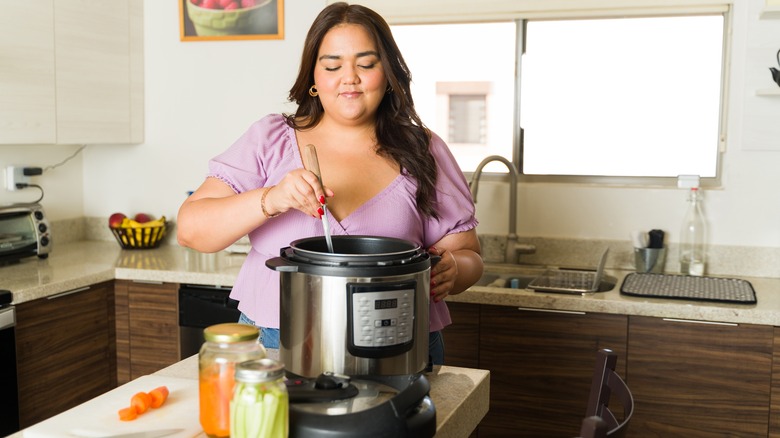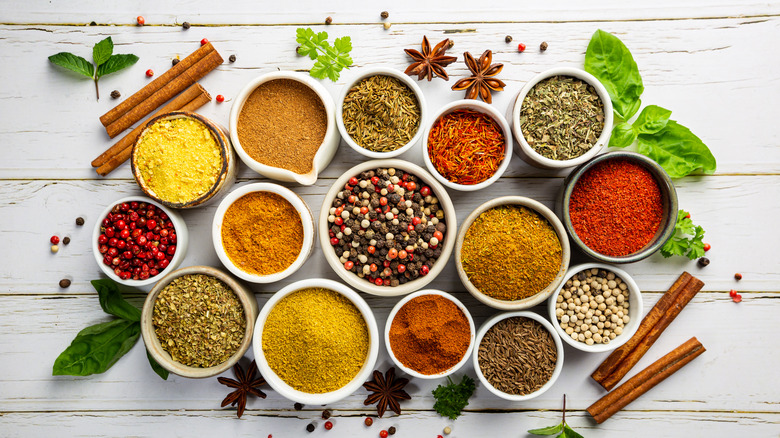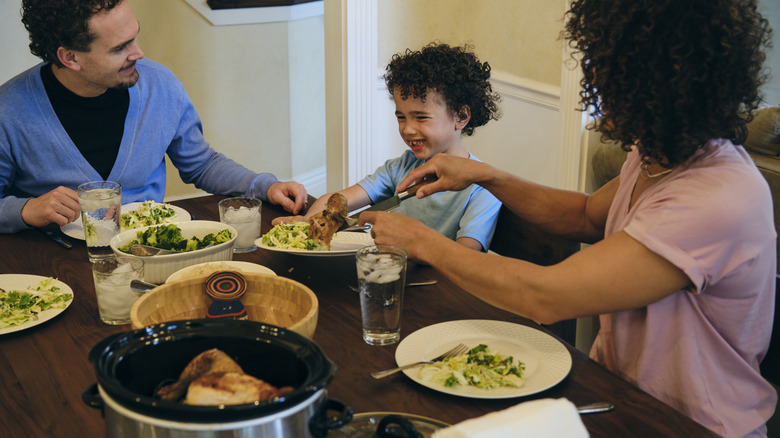The Seasoning Mistake That's Giving You Boring Slow-Cooked Meals
Even the best slow cooker recipes can be somewhat disappointing if the seasoning is lacking. Seasoning not only adds a whole world of new tastes to food, but it also brings out the inherent flavors in your favorite slow cooker dishes, including French onion soup, honey garlic chicken wings, and pulled pork dip. The key to preventing these and other slow-cooked meals from becoming hopelessly bland is to season them thoroughly, which requires a bit of a heavy hand at the spice rack.
As illustrated by the name of the beloved kitchen device, slow cookers heat and cook food over long periods of time. Extended cooking times might make for greater convenience when preparing meals, since you won't need to linger over a hot stove, but they can also reduce the impact of flavorful ingredients, which is why you must add herbs and spices liberally. Don't be afraid of over-seasoning, as much of the flavor is bound to cook off as all the ingredients simmer away together for hours. Also, focus on seasonings that pack a punch in the flavor department. This includes selections like cumin, garlic powder, smoked paprika, and turmeric.
Best practices when adding seasoning to slow cooker meals
No matter what type of spices you ultimately use in your slow cooker, opt for whole spices whenever possible. Spices like whole peppercorns are quite robust in the flavor department, which can be overwhelming when using more expedient cooking methods. They're the perfect match for slow cookers, however, as the low temperatures and lengthy cooking times are just the thing to gradually tease the full flavor out of the whole spices.
The question of when to add dry herbs over fresh herbs also applies to slow cooker dishes. When incorporating dried herbs into your recipes, it's best to add them early in the cooking process. That's because dried herbs are much less potent than fresh varieties, and allowing them to simmer alongside other ingredients is the best way to draw out their flavors. On the other hand, the fresh kind should ideally be added when a meal has finished cooking to preserve their vibrancy. Using other ingredients as last-minute additions can also make a big impact.
Keep adding flavor after cooking
In order to make your slow cooker dishes sing, you'll want to keep building flavor with your garnishes. You can tinker with contrasting tastes, like adding sour cream or shredded cheese to slow cooker chili, or accentuate the inherent flavors in your recipes, whether that means adding a sprinkle of paprika or some extra roasted cloves to Castilian garlic soup, or squeezing some fresh lime juice over slow-cooked carnitas tacos to give each bite a sharper tanginess. Also, don't discount simple seasonings like freshly cracked black pepper and salt (either whatever's on hand or the fancy finishing kind with big flakes).
Even when slow cooker recipes are bursting with flavor, textures can sometimes leave a little something to be desired as all the components cook down. Certain ingredients can offer textural variation while also incorporating some new flavors into the mix. Herbed homemade breadcrumbs are ideal for pasta dishes, while Asian-inspired sesame or peanut noodle recipes can benefit from crushed and toasted peanuts. Even store-bought additions can work, like tossing handfuls of savory, crunchy fried shallots into bowls of slow cooker red curry chicken. With these tasty tips, you'll never need to suffer through a one-note slow cooker meal again.


